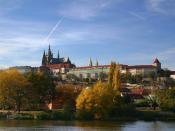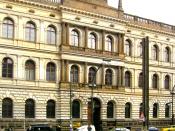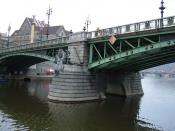1. IntroductionAfter July's tropical heat most people welcomed the first August showers with relief. But several days of persistent rain have produced a different problem - a wave of floods. In August, 2002, the Czech Republic was again hit by devastating floods, but this time we can point it out as the biggest natural disaster in modern Czech history.
In some areas the floods - which affected over one third of the country - were the worst in 500 years. There were thousands of people had to be evacuated from their homes. Normally, 300 cubic meters of water flow per second through Prague in the Vltava River. At the flood's high point about 5 000 - 6 000 cubic meters of water per second overflowed the bank of the river.
Outside of Prague the situation was much the same, many towns and villages in Bohemia were either flooded as new rains continued to swell rivers and wipe out bridges or cut off from the world.
One of the most serious causes in Czech was the town of Troubky in South Bohemia. This town was completely destroyed. Of the several dozen people that were missing, 17 were later found drowned. When the country emerged from the nightmare days later, the overall damage was assessed at 63 billion crowns which is equivalent to more than 3 billion US dollars.
This disaster didn't miss obviously the cultural heritage of the country and ruined priceless cultural artefacts. The country's precious historic legacy, unique architecture, books and paintings took a heavy hit; some of them were beyond salvation.
According to VojtÃÂch BalÃÂk, Director of the National Library of the Czech Republic, "About one million volumes from various library collections, among them several incunabula, early prints and printed books up to the 1800, and some...


